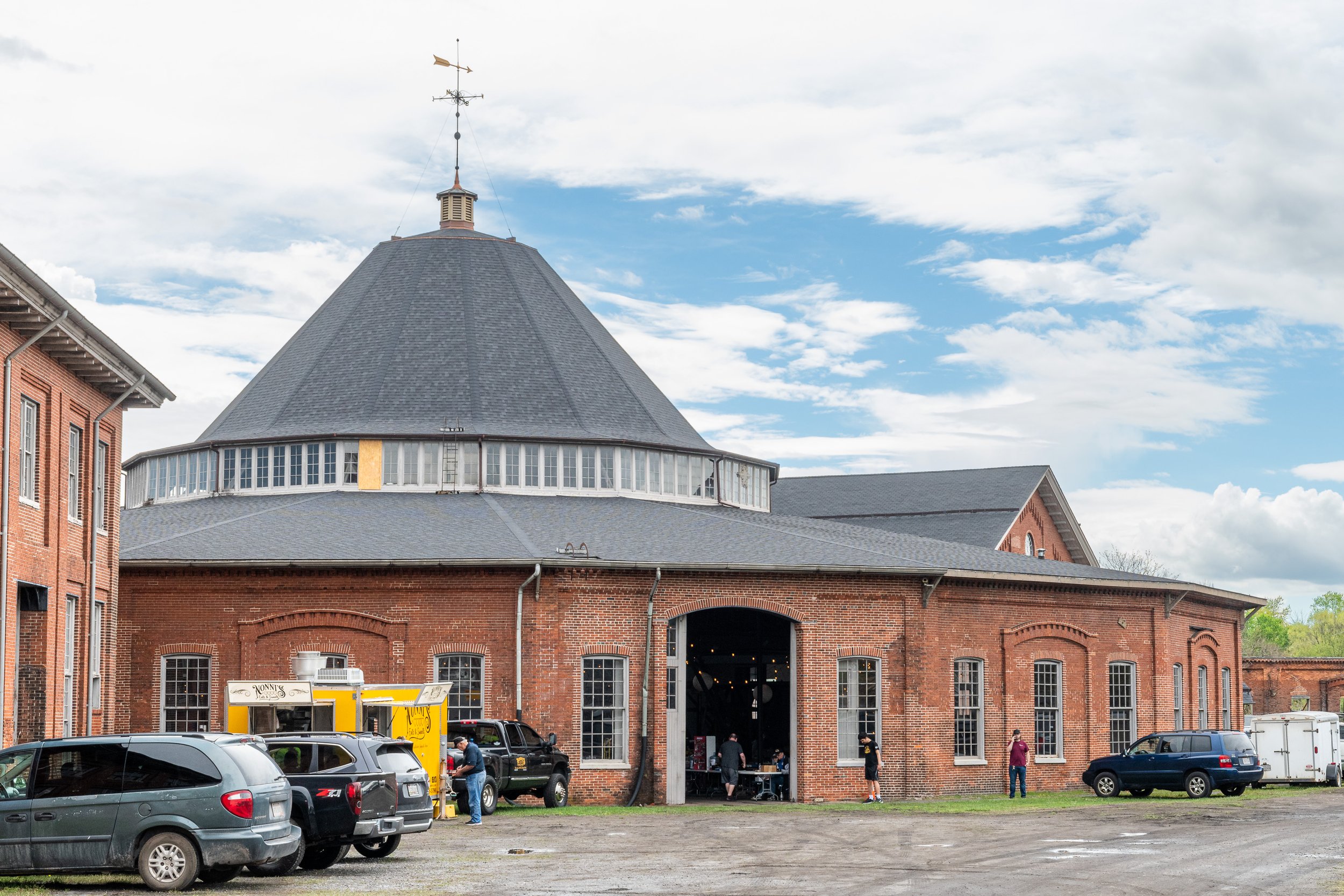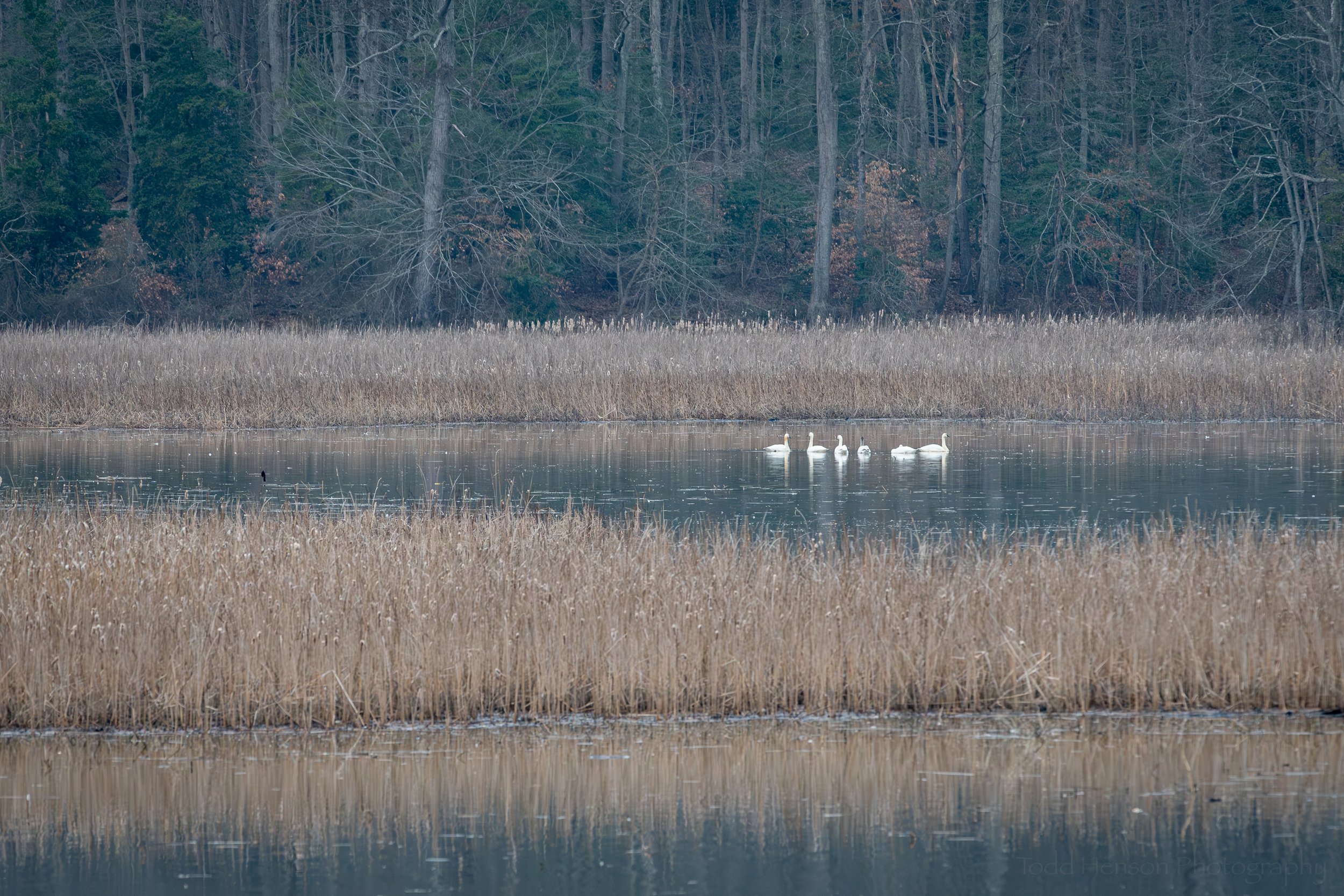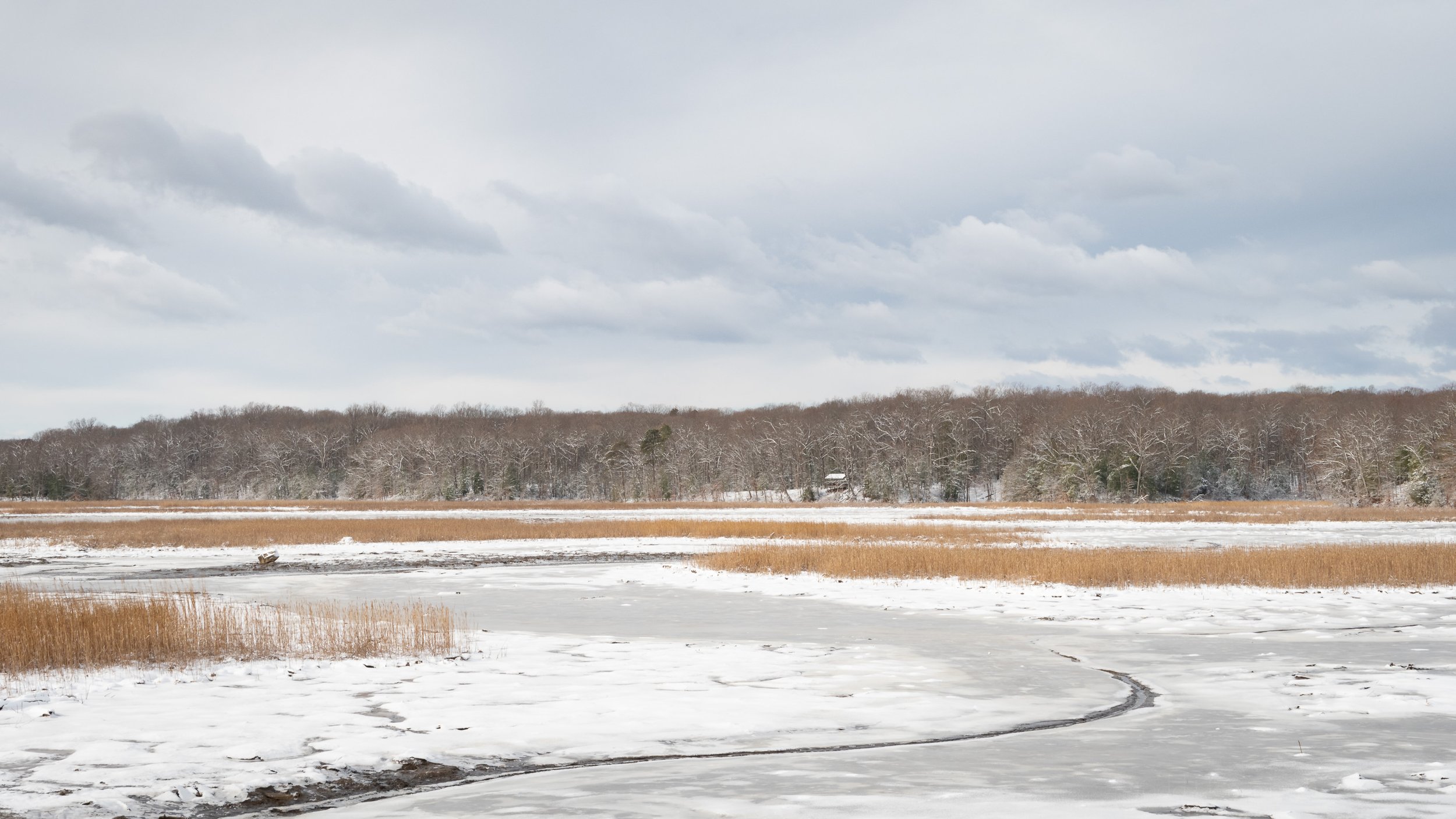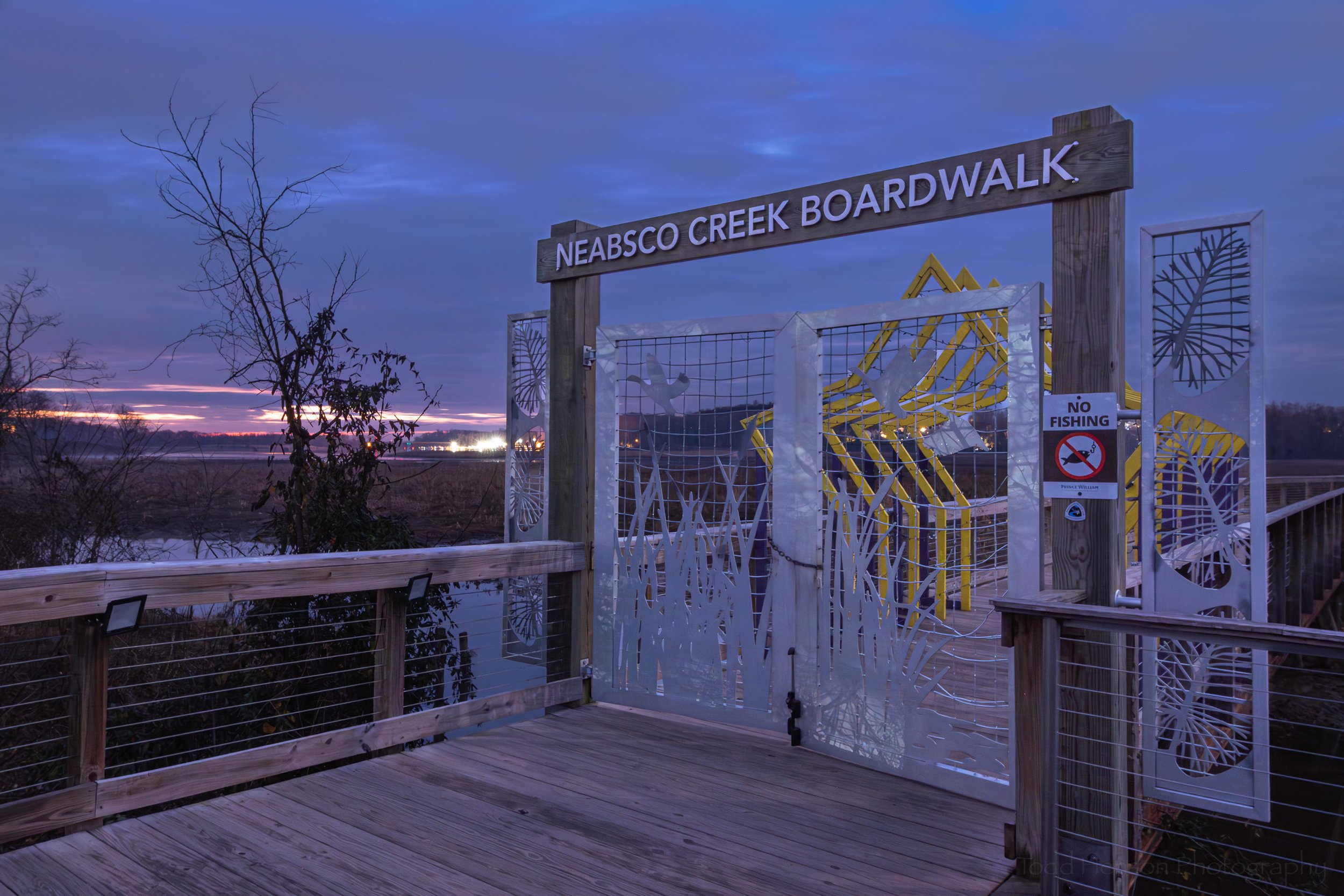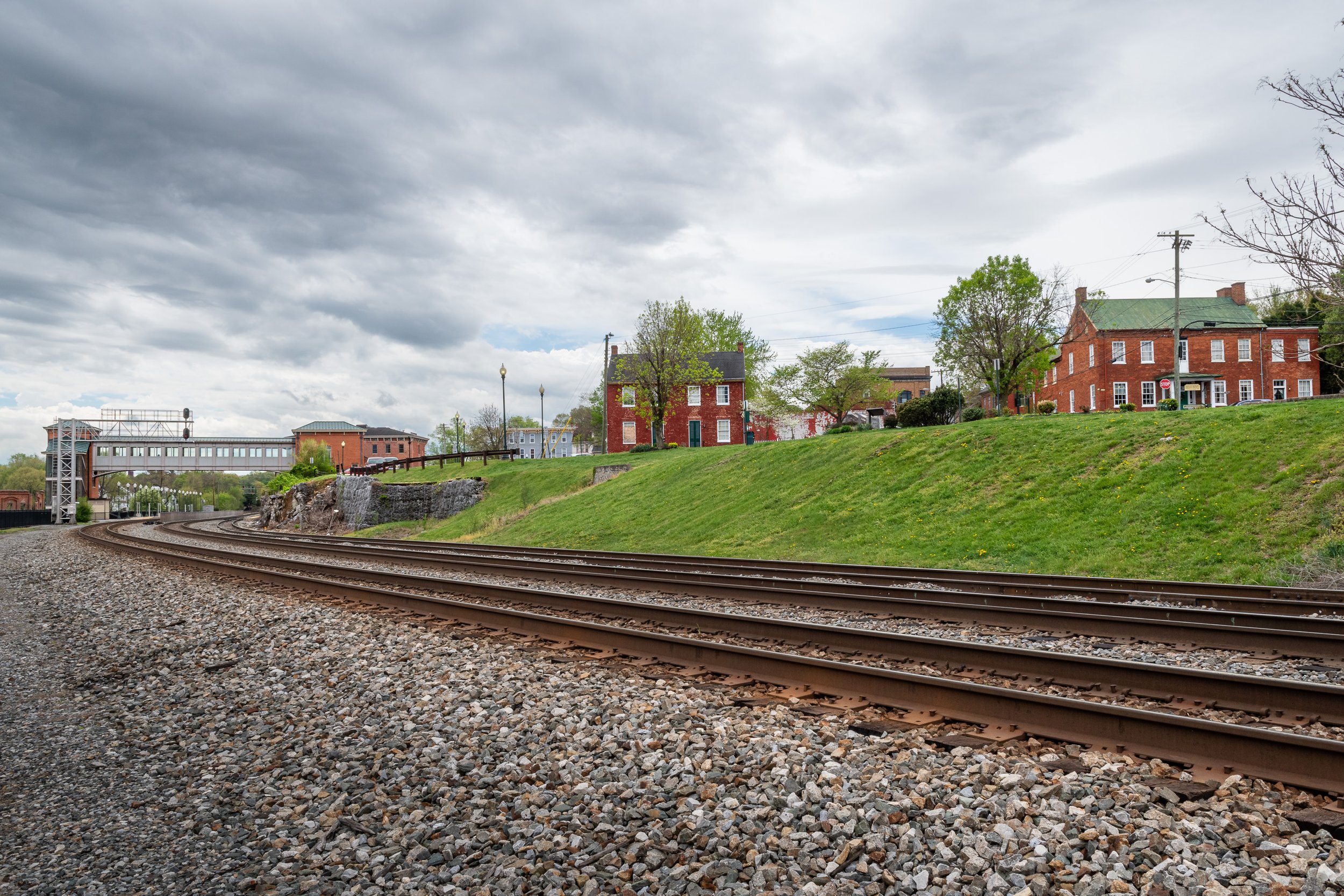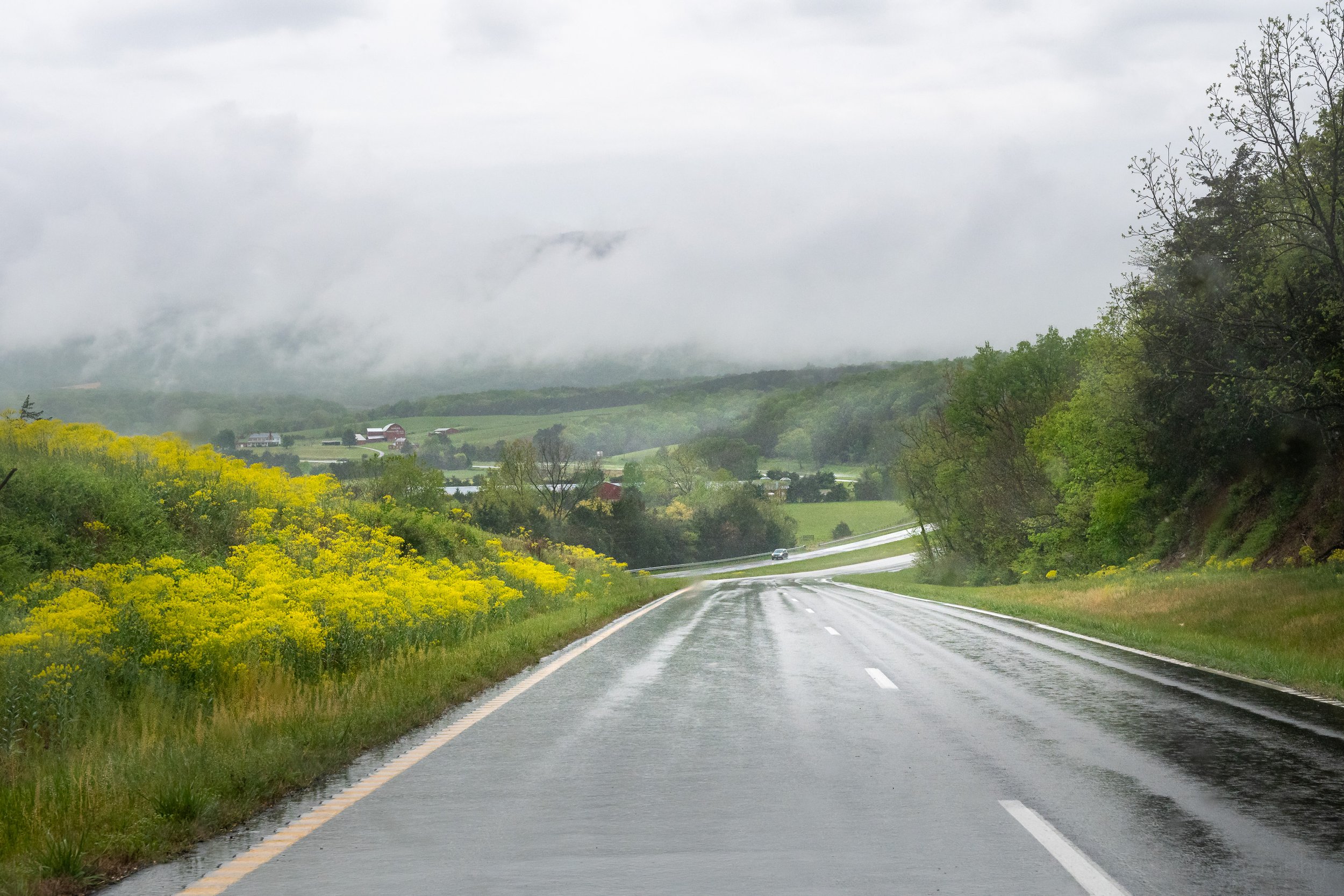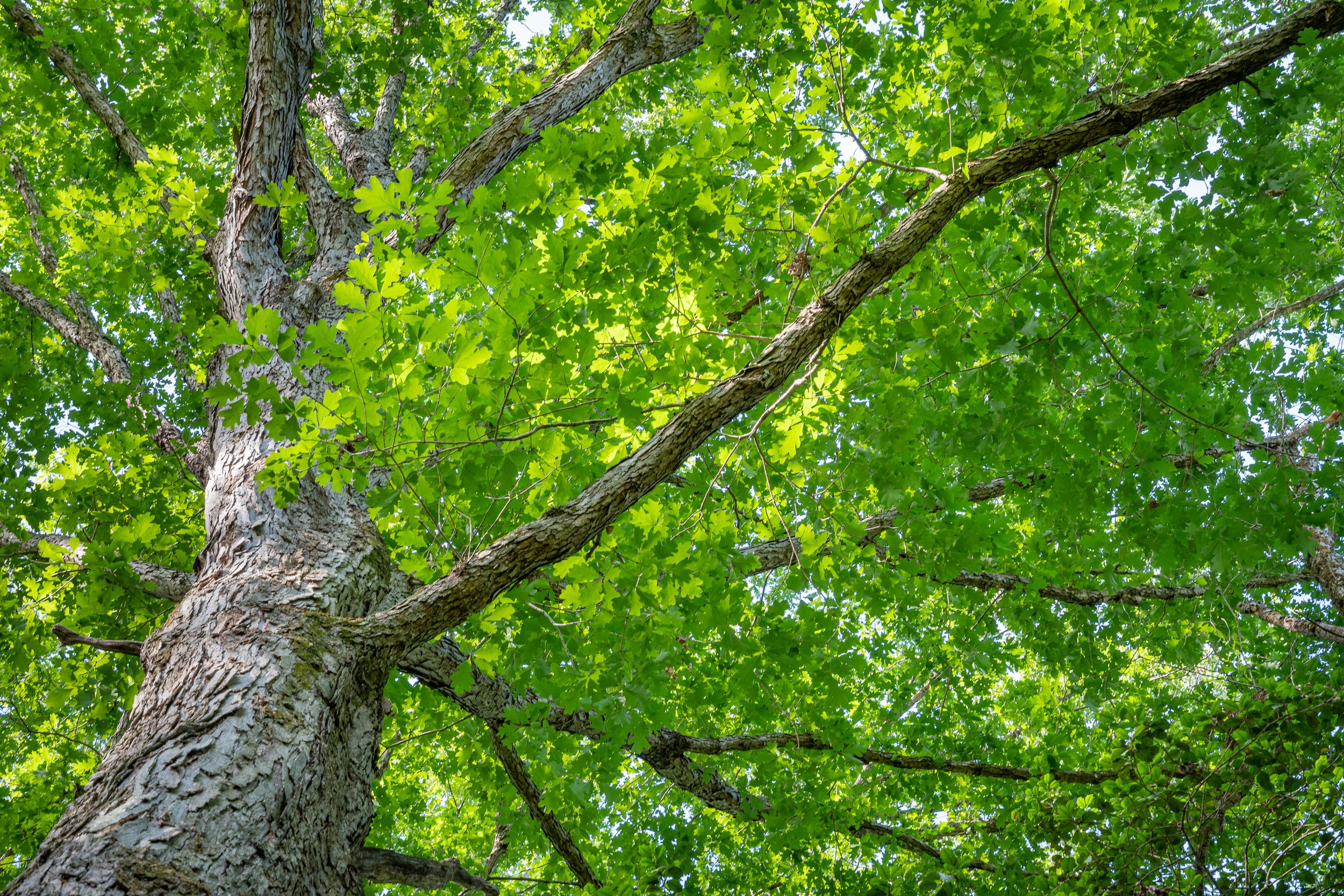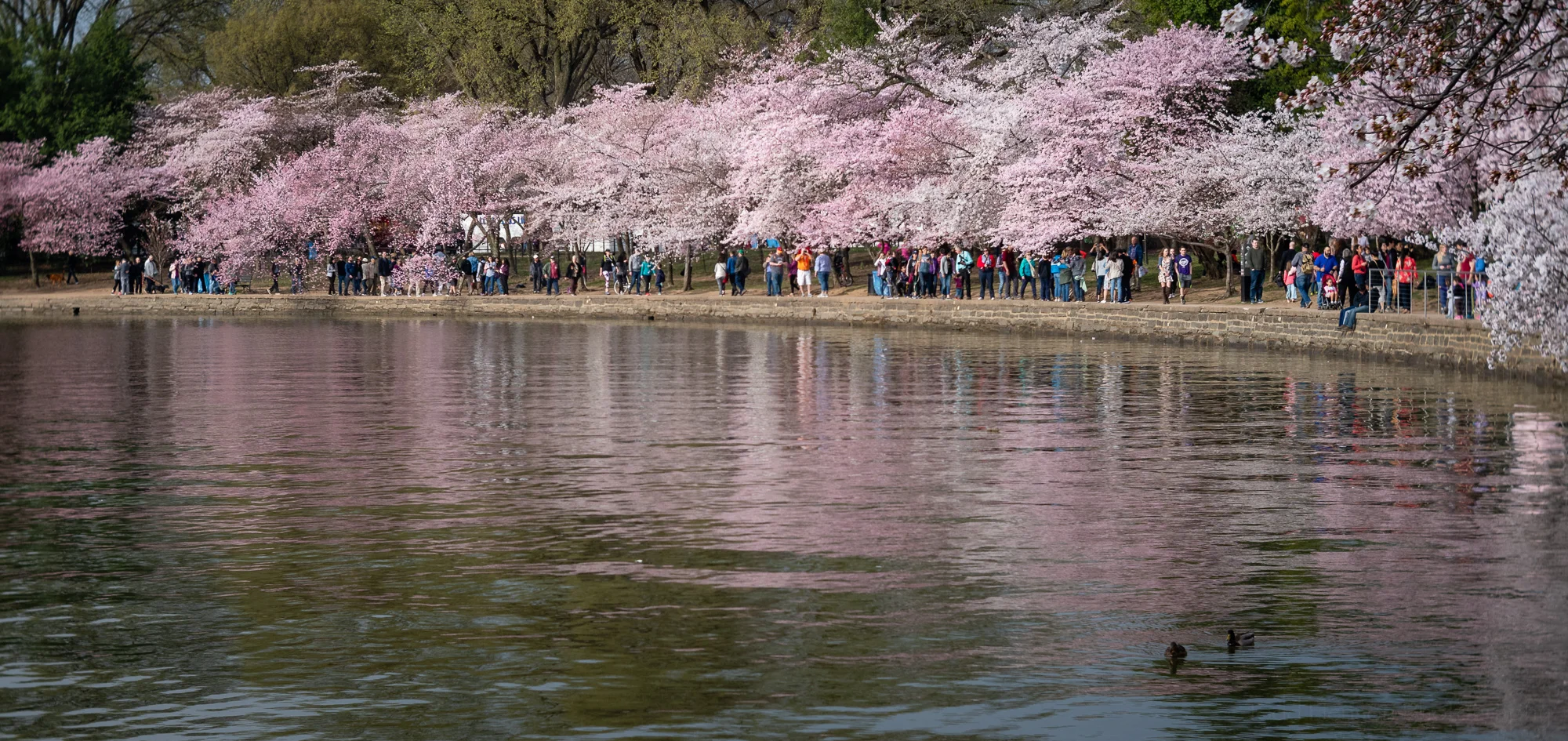One April morning we walked down Pyrite Mine Road
Some of the trails we hike are actually old roads that when the land was transitioned to the National Park Service became trails for hiking. One of those is Pyrite Mine Road, and as the name implies, it was once the road that led to an active pyrite mine. Of course, that mine is no more, with the shafts closed off and only the remains of some old structures still standing, along with Park Service signs with information about the old mine and how the land was reclaimed, cleaned up and redeveloped into part of Prince William Forest Park.
Interestingly, this photo was created almost exactly 2 hours after the one above. This time we’re headed back out, but stop to view the blooming redbud and dogwood along the side of the road.
This particular morning was in early April with signs of spring showing, those beautiful lighter greens beginning to grow on the trees, some flowers blooming, and on this day a soft filtered light from a completely overcast morning. I loved how the soft light illuminating those soft greens gave the entire world along the road a soft look to it, far softer than it will look once all the leaves have grown back in and filled in all the gaps between the trees (how many times can I use soft in one sentence? 😁).
Having passed the redbud I turn around and look back down the road. You can see how it goes downhill from here.
The only lens I’d brought for this hike was a 105mm macro lens, figuring we might find some nice flowers or interesting mushrooms along the forest floor. But as my father and I hiked I realized I also wanted to capture the beautiful soft look of the trees around the trail, something the wide maximum aperture of this lens (f/2.8) actually helped with (though this wasn’t planned when we set out that morning). Instead of trying to keep everything in sharp focus I opted to open the aperture, making portions of the scene blurry, contributing to the soft feel of the scene and perhaps guiding the eye into the image.
Here we’ve just about reached the end, or more appropriately, the beginning of Pyrite Mine Road. The road sign can just barely be seen in the distance, as can a couple blooming dogwood closeup and further off.
So as we hiked I looked for little stretches of the trail that had some interest to me, perhaps a bend in the road, maybe a bit of color from blooms in the trees, maybe just a bit more of that soft light I was enjoying. Through these photos I wanted to take you along with us on our walk, sharing some of the moments we enjoyed that morning walking through the woods in early spring.
And one final view looking back down Pyrite Mine Road before we head back to the parking lot.
Do you enjoy these posts?
Sign up to receive periodic emails with updates and thoughts. Don’t worry, I won’t spam you. And please consider purchasing artwork or products from my online store, and using my affiliate links in the sidebar to the right when shopping online.
I appreciate your support!





